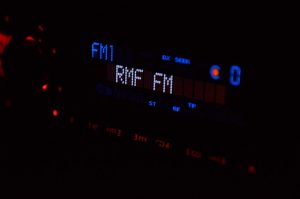People young and old all across the country love listening to the wide variety of shows available on FM radio, but poor reception can really affect your listening pleasure.
A number of factors are known to affect the reception of FM radio signals, leading to a less than perfect reception.
However, rather than accept an inferior sound from your favourite station there are steps you can take to make sure you receive the strongest signal possible at home.
FM radio remains the most popular choice for listeners despite previous plans to switch analogue services to DAB.
What factors can affect FM radio reception?
Most radios work with a built in antenna that picks up FM radio transmissions within a local area usually resulting in an excellent sound for music radio in particular.
However, a number of factors can cause problems such as interference, static, poor reception or a failure to access stations by blocking or weakening the signal. These include:
- Being out of range – FM signals generally only transmit to around 100 miles. If you live in a remote area it may not be well served by transmitters.
- Physical blocks – trees and tall buildings can interfere with radio signals; weakening or even blocking the signal. This can be problematic where a home receives two signals and one is delayed by being deflected off a building.
- Electronic interference – Common household items such as computers, televisions, dimmer switches or even the thermostat can affect the signal. Switch off nearby devices to eliminate them as a cause of interference.
- Pirate radio stations – Stations using nearby bandwidth can result in the listener hearing two different sounds.
- The weather – hot weather rather than storms can be an issue for radio reception as high pressure weather systems are known to affect FM radio reception occasionally.
What can I do about poor FM radio reception?

When the problem of poor FM radio reception is due to interference from an electrical item in the house moving the radio away should help.
Likewise if the location of the radio is resulting in a blocked signal, moving the radio – or – just the aerial around could improve the signal.
One of the most effective steps to take though is installing an external FM aerial that can be plugged into the back of your radio. Firstly you will have to check that the device supports an external aerial.
A professional aerial installation service will be able to fix a dedicated FM aerial onto your roof to help boost the signal received in the house. By being located higher up, and with fewer physical blocks, the signal should be stronger and clearer.
To improve the reception of your FM radio contact Aerial Services Ltd to arrange an appointment to install an external FM aerial.










